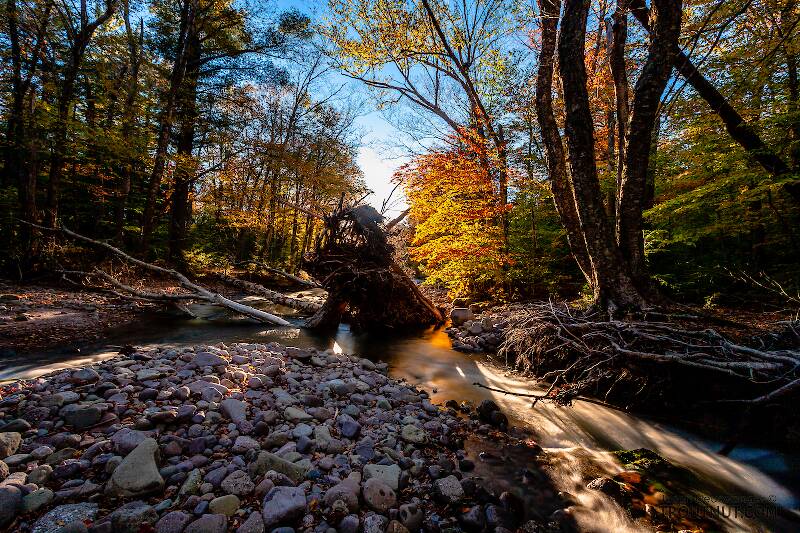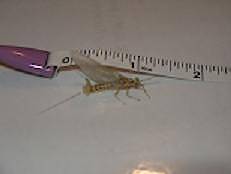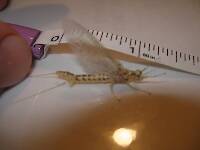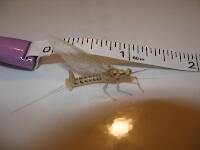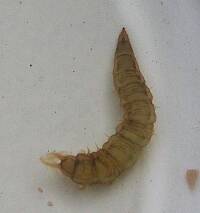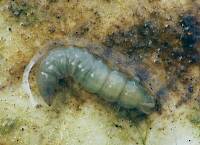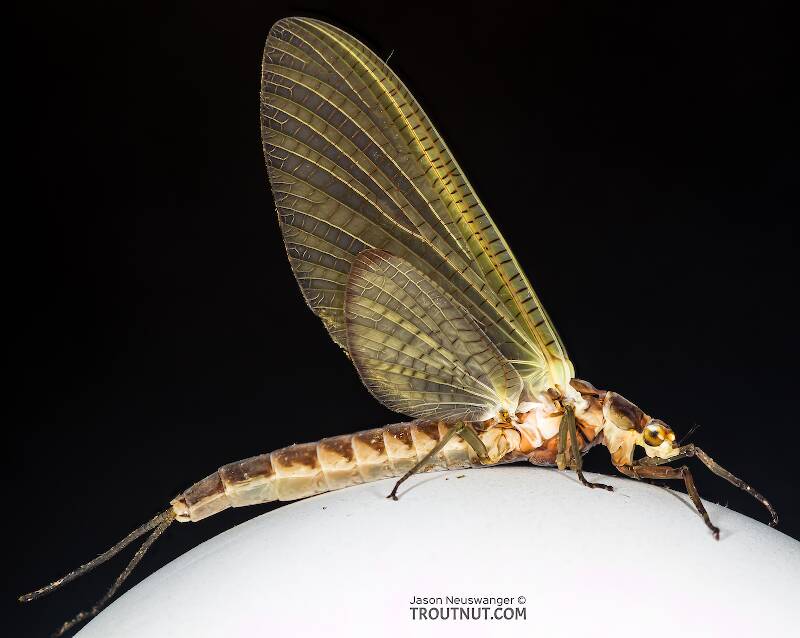
Hex Mayflies
Hexagenia limbata
The famous nocturnal Hex hatch of the Midwest (and a few other lucky locations) stirs to the surface mythically large brown trout that only touch streamers for the rest of the year.
Featured on the forum
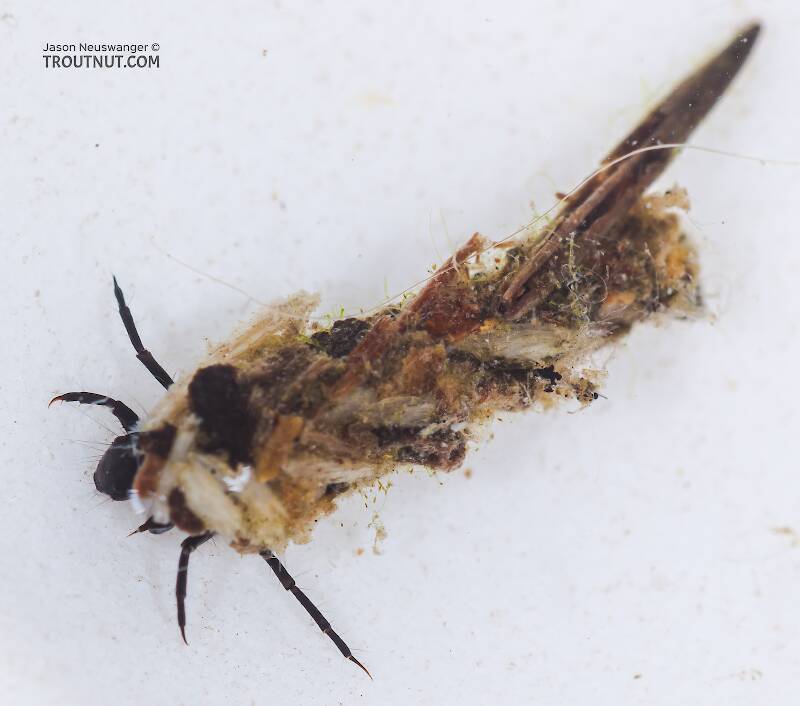
This seems to be a young larva of Limnephilus. Although not clear in the picture, several ventral abdominal segments have chloride epithelia.

Troutnut is a project started in 2003 by salmonid ecologist Jason "Troutnut" Neuswanger to help anglers and
fly tyers unabashedly embrace the entomological side of the sport. Learn more about Troutnut or
support the project for an enhanced experience here.
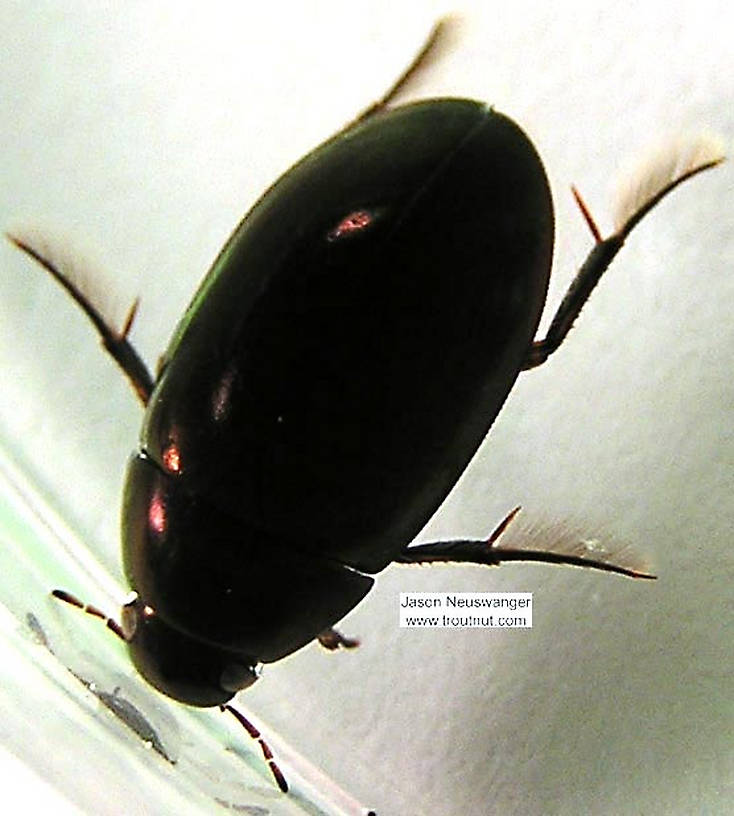
This is a water beetle. It is the hardest object in the world to pick up with tweezers. The second hardest is Mount Everest.
DMM
Posts: 34
Posts: 34
DMM on Nov 18, 2006November 18th, 2006, 7:58 pm EST
Beetles can be very tricky to identify. It has been my experience that it is extremely difficult to identify many insects to the species level based on pictures alone. It may not be able to be positively identified to genus either. The family is probably correct though, except the family isn't listed here. The family should be Hydrophilidae. Hydrophiloidea is a superfamily designation. Having said that, GONZO's ID could be correct (and if he has the experience, probably is), it's just not possible for me to confirm this.
David
Troutnut on Nov 20, 2006November 20th, 2006, 6:03 am EST
Hey DMM,
Thanks for all the IDs! I've shuffled all the specimens around the site now to fit your recommendations.
Thanks for all the IDs! I've shuffled all the specimens around the site now to fit your recommendations.
Jason Neuswanger, Ph.D.
Troutnut and salmonid ecologist
Troutnut and salmonid ecologist
Quick Reply
Related Discussions
Topic
Replies
Last Reply
10
Jun 30, 2009
by Jmd123
by Jmd123
Re: Anyone else find these to be important?
In the Giant Water Bug Species Belostoma flumineum by Troutnut
In the Giant Water Bug Species Belostoma flumineum by Troutnut
2
Oct 9, 2006
by GONZO
by GONZO
Re: Spencer Visits With, "Those Pennsylvania Boys" Part 1 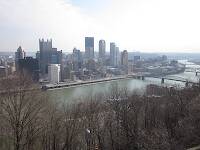


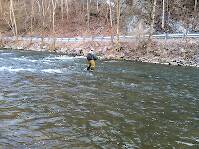
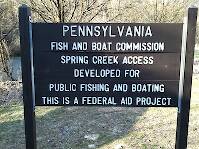
In the Photography Board by Oldredbarn
+ 12





In the Photography Board by Oldredbarn
16
Apr 15, 2013
by Entoman
by Entoman

